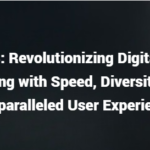Redesigning the Virtual Landscape
In a bid to evolve into a dynamic “virtual branch,” the Burlington County Library System recognized the need for a website overhaul. The previous design lacked the vision to reach a broader audience, plagued by visual antiquity, erratic navigation, information obscurity, and technological inadequacies. Collaborating with I.F., they embarked on a mission to reshape their online presence, turning it into a user-friendly gateway spanning 16 physical sites.
User-Centric Approach: Unveiling the Data-Driven Redesign
Unearthing User Requirements with Precision
The Voice of Patron® study uncovered a recurring challenge: patrons struggled to navigate the library’s resources efficiently. Particularly, users aged 55 and above, forming the majority of their demographic, faced difficulties when faced with unclear interfaces. Our primary focus was deciphering this data to craft an intuitive navigation system that catered to users in branches, on chat, or via phone interactions.
Crafting a Seamless Experience
The redesigned website prioritized clarity, readability, and ease of use for users of all ages and skill levels. This user-centric approach aimed to benefit both customers and library staff, ensuring a smooth interaction whether in branches or online.
Enhancing Functionality: A Technological Facelift
Streamlined Event Management
Integrating a sophisticated events system empowered the library to effortlessly create event listings, even for intricate scenarios like capped registrations and irregular intervals. The Drupal administration dashboard streamlined event planning and registration, eliminating the need for additional interfaces or licenses.
Success Elements
- Prioritized Navigation: Giving precedence to high-use tasks.
- Digital Resource Hub: A centralized and user-friendly repository.
- Clear Communication: Emphasis on straightforward language.
- Mobile-Friendly Registration: Ensuring events can be accessed on mobile devices.
- Secure Online Forms: Easy and safe access to digital forms.
- Training for Editors: Providing advanced features and integration insights.
Innovating Beyond the Virtual Realm
Brand Transformation and Accessibility
Beyond a website revamp, the Burlington County Library System aimed for a complete brand makeover. We partnered to ensure the new brand permeated both online and offline realms. Ensuring WCAG 2.1 AA compliance and adhering to best practices, we facilitated user-friendly enhancements to the website and overall brand.
Innovation at Work: A cohesive strategy ensuring accessibility onsite and beyond.
Why did the Burlington County Library System undergo a website redesign?
The Burlington County Library System recognized the need for a comprehensive overhaul to transform into a dynamic “virtual branch.” The previous design faced challenges such as visual antiquity, erratic navigation, information obscurity, and technological inadequacies, hindering outreach to a broader audience.
2. What were the main issues addressed in the redesign?
The redesign aimed to tackle various issues, including unclear interfaces, inefficient navigation, and technological inadequacies. The focus was on creating a user-friendly gateway spanning 16 physical sites, providing a seamless experience for users of all ages and skill levels.
3. How was user feedback incorporated into the redesign?
The Voice of Patron® study played a crucial role in uncovering challenges faced by patrons, especially those aged 55 and above. User feedback, particularly from this demographic, guided the precision in understanding user needs and crafting a user-centric symphony.
4. What specific improvements were made for users aged 55 and above?
The redesign prioritized clarity, readability, and ease of use, specifically targeting the challenges faced by users aged 55 and above. The goal was to eliminate confusion in navigating resources, ensuring a smooth interaction whether in branches or online.
5. How did the Burlington County Library System ensure a seamless experience for both patrons and staff?
The user-centric approach extended beyond patrons to create an efficient interaction environment for library staff as well. Clarity, readability, and ease of use became guiding principles, enriching the overall library experience for both users and staff.
6. What technological enhancements were integrated into the redesigned website?
A sophisticated events system was integrated, empowering the library to create event listings effortlessly. The Drupal administration dashboard streamlined event planning and registration, ensuring a secure and efficient process.
7. Were there any specific success elements incorporated into the redesign?
Yes, several success elements were prioritized, including giving precedence to high-use tasks in navigation, establishing a centralized and user-friendly digital resource hub, emphasizing clear communication, ensuring mobile-friendly event registration, providing secure online forms, and offering training for editors on advanced features.
8. How did the Burlington County Library System ensure accessibility and brand transformation?
Beyond the website revamp, the system aimed for a complete brand makeover. The new brand permeated both online and offline realms, ensuring WCAG 2.1 AA compliance and adhering to best practices, resulting in user-friendly enhancements to the website and overall brand.
9. What impact did the redesign have on daily library operations?
The positive impact of the redesign resonated not only with patrons but also echoed positively in the daily operations of library staff. The uniform and user-friendly experience ensured efficient operations both onsite and in virtual interactions through chat or phone.
10. How will the lessons learned from this redesign guide future initiatives?
The data-driven and user-centric approach adopted in this redesign will serve as guiding principles for future initiatives, ensuring an unwavering commitment to user satisfaction and the continual improvement of library services.








